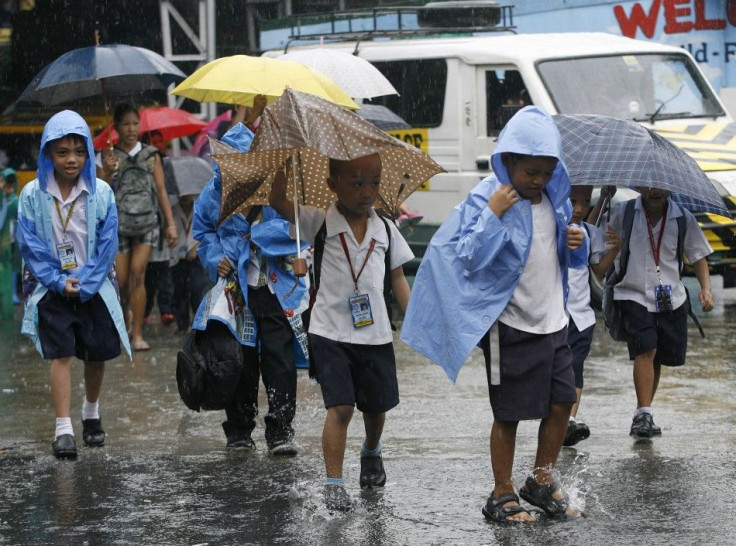Typhoon Nesat Pounds Philippines, Markets Closed

Typhoon Nesat pounded the Philippines' main island on Tuesday, lashing crop-growing provinces and bringing the capital to a near standstill as it disrupted power supplies and closed financial markets, government offices, transport and schools.
At least one person, a 22 month-old boy, died in the storm, and four people were reported missing.
Nesat was a category 3 typhoon with winds of around 200 km per hour (125 mph) when it hit northern provinces of Luzon island just before dawn on Tuesday. It lost some strength as it moved west northwest at about 20 kph.
Large portions of the capital Manila, a city of 13 million, were without power, and the light rail networks were shut as a precaution, officials said, after high winds cut power lines and toppled electric posts. Most domestic flights were cancelled.
This is only a temporary shut-off, so that there will be no accidents, no short circuit, because if electric posts are toppled, there might be short circuits, Benito Ramos, head of the national disaster agency, said in a radio interview.
Strong winds tore off some billboards along major roads, with one slamming into three parked cars in the financial district.
The waters of Manila Bay overflowed onto Roxas Boulevard, flooding streets and parks around the U.S. embassy, central bank and finance department. At points, the water was waist-deep, a Reuters cameraman said.
Manila residents in low-lying areas waded through thigh-high floods to seek higher ground and evacuation centers. Winds tore the tin roof from a gymnasium used as an evacuation center in the poor, crowded Tondo district in the capital, sending evacuees scampering for new shelter.
TYPHOON DAMAGE
Nesat, with a diameter of 650 km, dumped heavy rains on rice and corn growing regions in central Luzon, with nearly all of the provinces on the main island under a typhoon alert.
The weather bureau said the typhoon, known locally as Pedring, was dropping 15-25 mm of rain an hour across its diameter.
The wind is very strong, Faustino Dy, governor of Isabela province where Nesat made landfall, told national radio. He estimated about 15 to 20 percent of rice crops in the province may be damaged by the typhoon.
The Cagayan Valley region, which includes Isabela, was projected to account for 8.4 percent of the national third quarter rice crop and 10.5 percent of fourth quarter output.
The Philippine Stock Exchange and the operators of trading systems for local currency and debt said there would be no activity on Tuesday due to a lack of clearing facilities, with government offices and the central bank closed. [ID:nL3E7KR02L]
The Bureau of Treasury rescheduled an auction for 9 billion pesos ($205 million) worth of 25-year T-bonds to Wednesday.
The one person confirmed killed in the storm was a 22-month-old boy who drowned on Monday night, while at least four fishermen were reported missing in the wake of the typhoon, the National Disaster Risk Reduction and Management Council said in its latest update.
Authorities ordered the evacuation of more than 100,000 people on Monday, warning that Nesat, known locally as Pedring, could cause landslides, flash floods and storm surges in coastal areas.
Nesat hit two years after typhoon Ketsana dumped heavy rains in the capital and nearby provinces, submerging large parts of Manila and killing hundreds.
($1 = 43.9 Philippine Pesos)
© Copyright Thomson Reuters 2024. All rights reserved.











